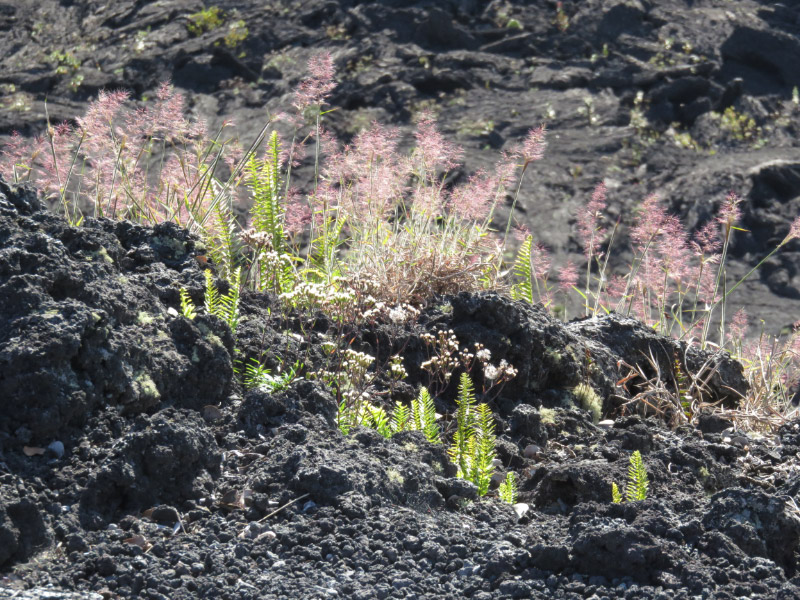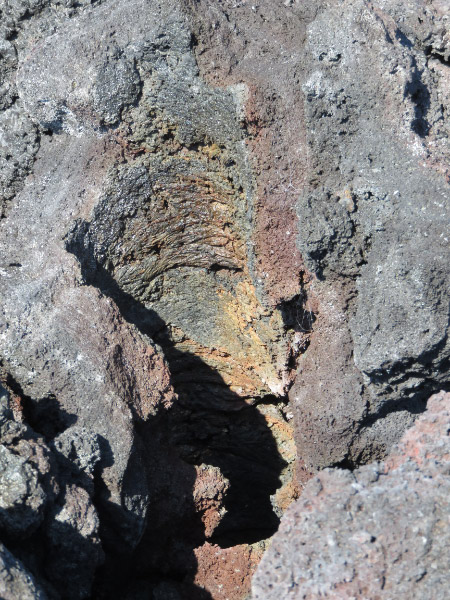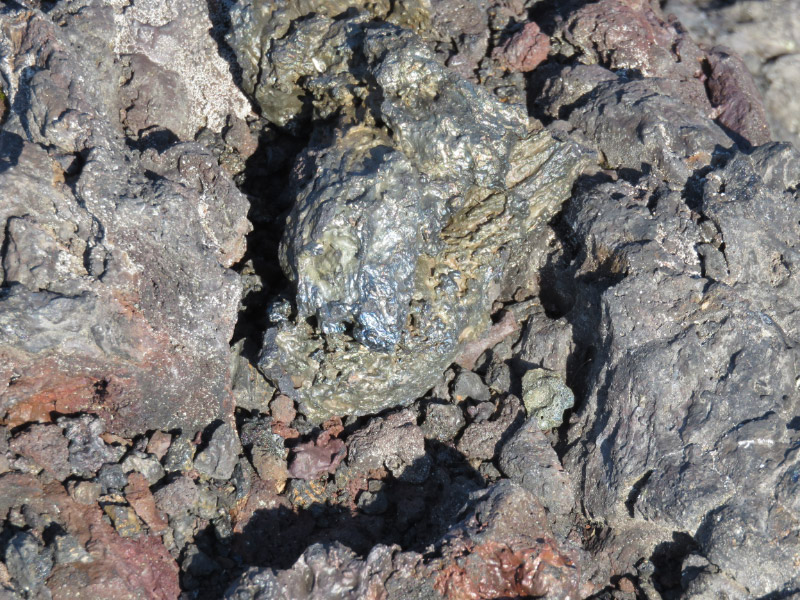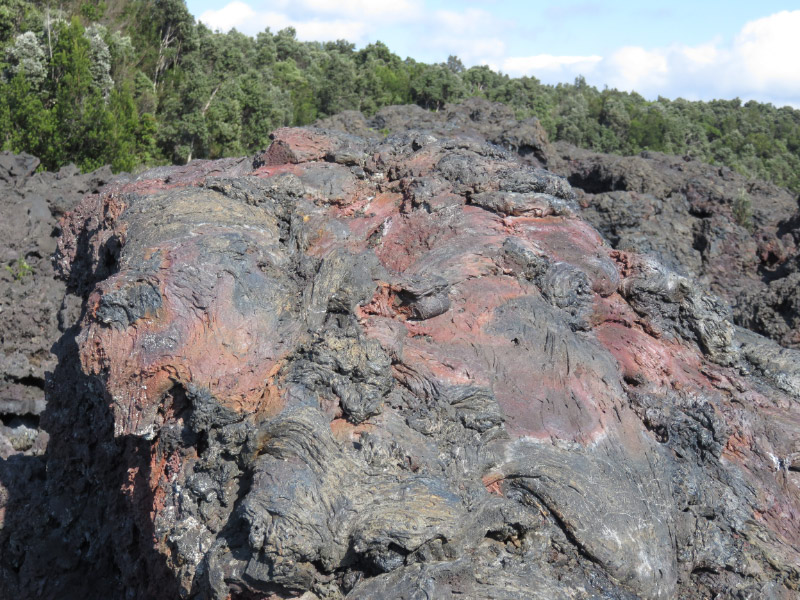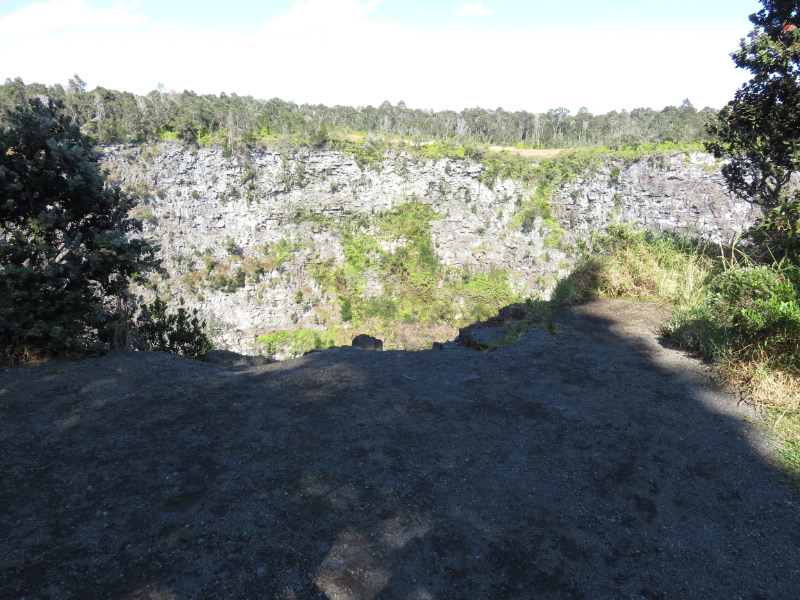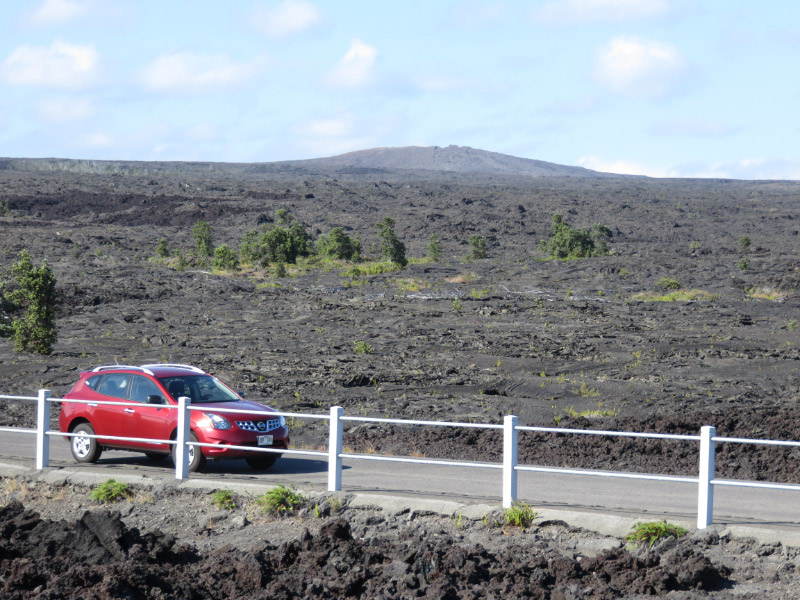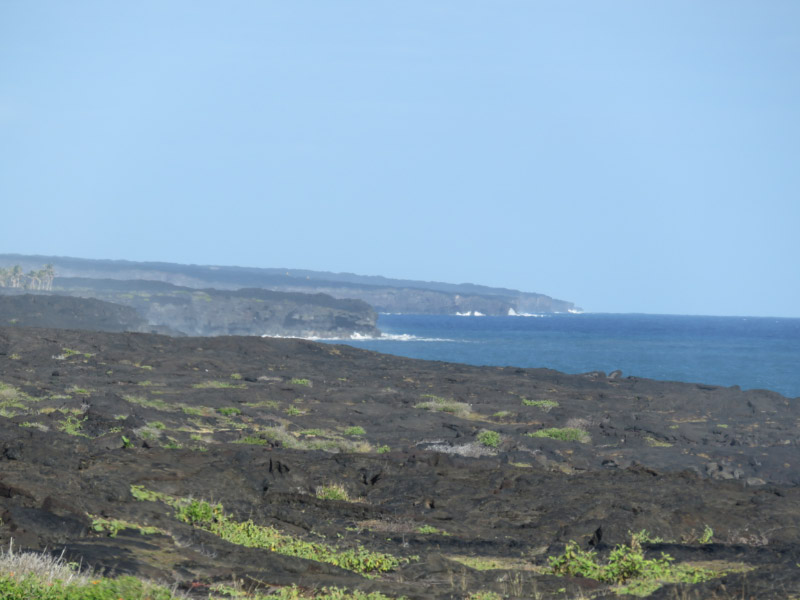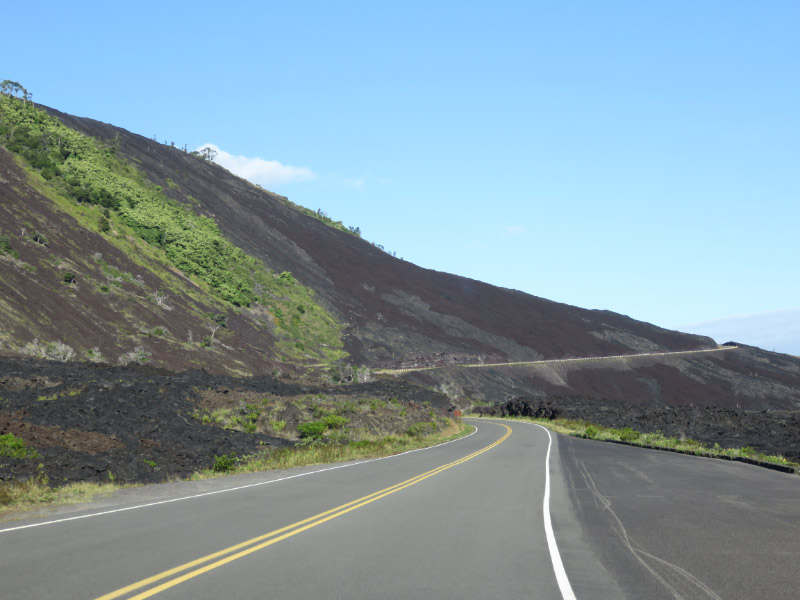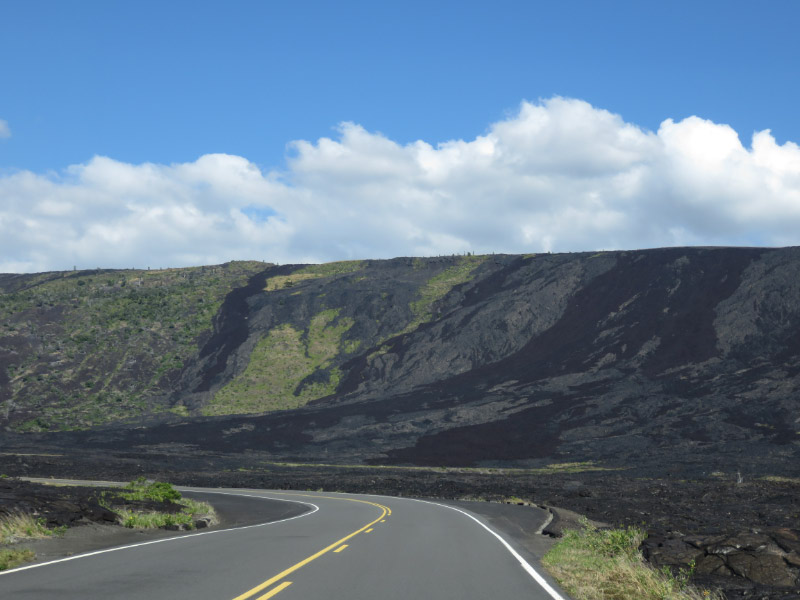Lava Tree State Monument
/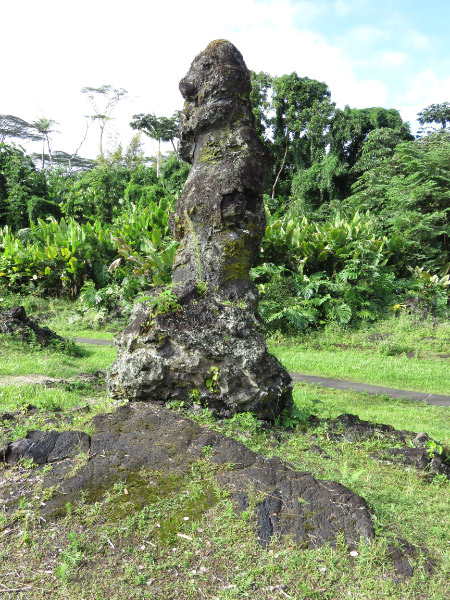 Lava Tree State Monument is a small park with a loop trail. The lava trees (molds of tree trunks formed when lava flowed through a forest) are older than the ones seen along Chain of Craters Road. Many of them were upright – look like totems, the hollow from where the tree trunk once was not visible.
Lava Tree State Monument is a small park with a loop trail. The lava trees (molds of tree trunks formed when lava flowed through a forest) are older than the ones seen along Chain of Craters Road. Many of them were upright – look like totems, the hollow from where the tree trunk once was not visible.
Many of the ohi’a lehu trees has ferns growing and other epiphytes growing on their shaggy trunks – those plants providing more green than the leaves from the tree.

I had not seen mushrooms or shelf fungus in Hawaii until Lava Tree State Monument…and here they were brilliant orange. They reminded me of dried orange peel.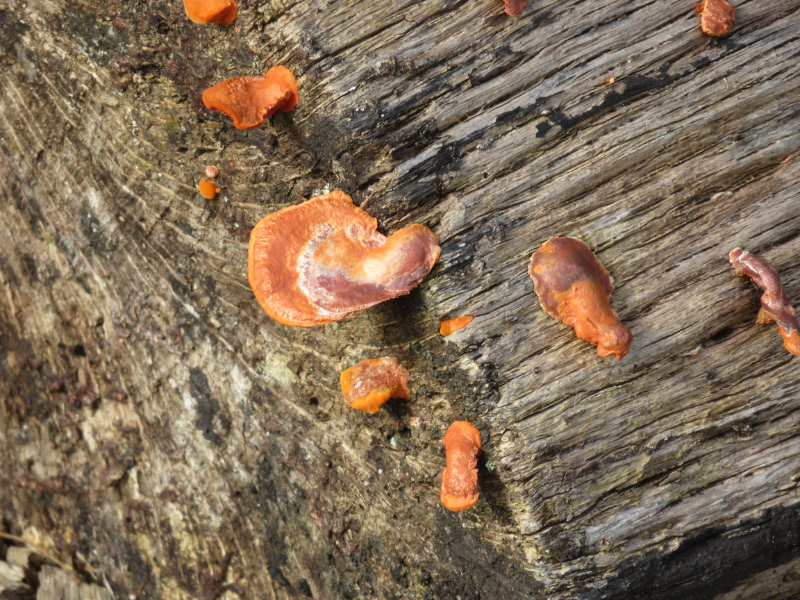
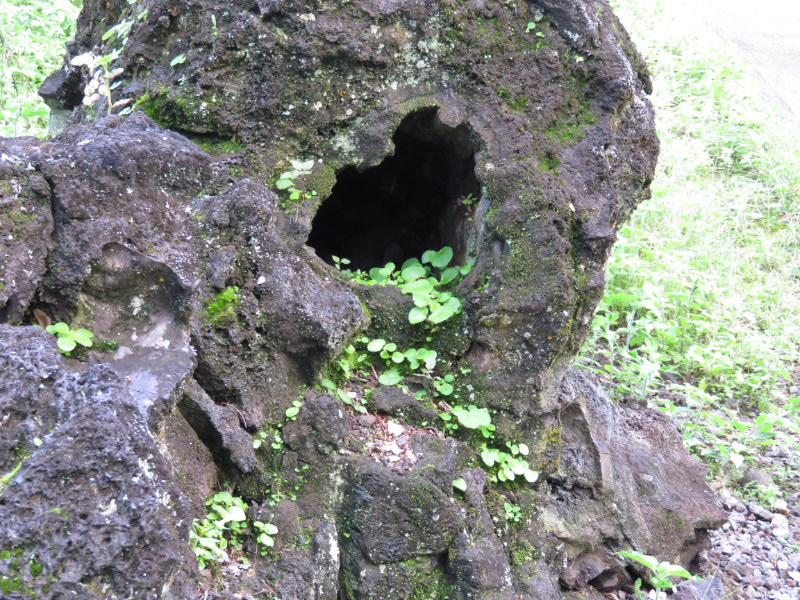 Sometimes the trees must have been horizontal when the lava surrounded them. Some of the lava trees are mini-communities of small plants, lichen and moss.
Sometimes the trees must have been horizontal when the lava surrounded them. Some of the lava trees are mini-communities of small plants, lichen and moss.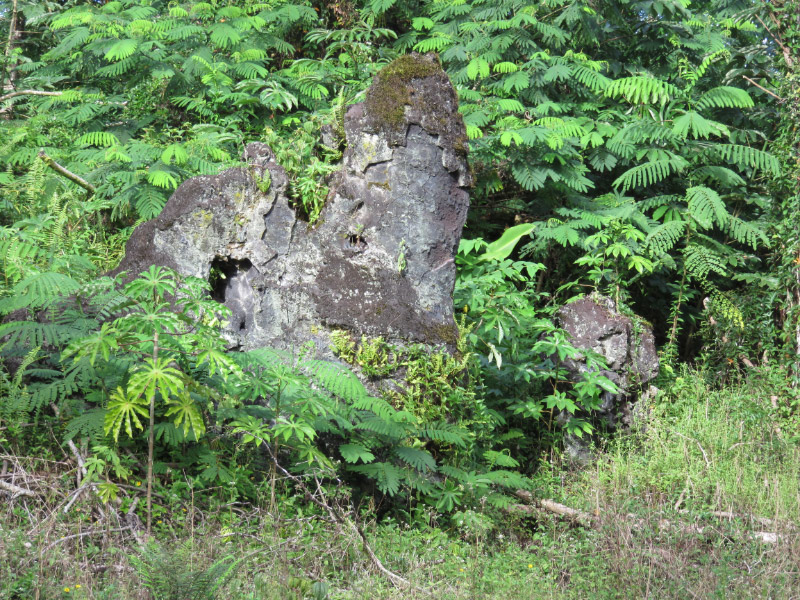
I was always startled by the orchids that thrive just about everywhere on the wet side of the island (i.e. the Hilo side…the Kona side is too dry for tropical plants except where extra water is provided by the resorts.
 Some of the lava trees are overgrown but the black – almost shiny – lava makes a stark contrast to the green plants.
Some of the lava trees are overgrown but the black – almost shiny – lava makes a stark contrast to the green plants.
The route to the monument passes through Pahoa, the small town that was threatened by a lava flow in October-November 2014.
Previous Hawaii Posts:

